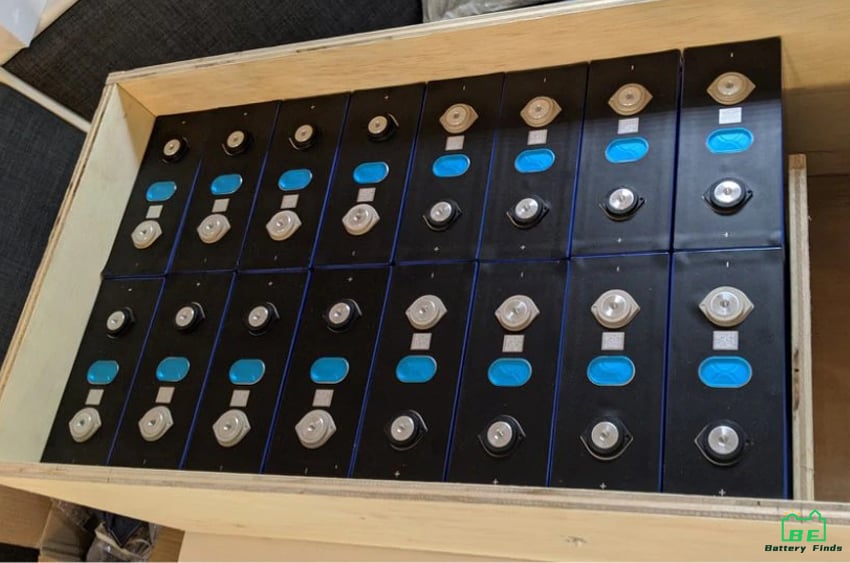LiFePO4 battery has always been a very safe lithium battery, but there must be some reasons for the LiFePO4 battery damaged. Because there is nothing invulnerable in the world, but as long as we fully understand it and take appropriate precautions, there is basically no need to worry.
The Possible causes of LiFePO4 Battery Damaged

Generally speaking, there are 3 possibilities to cause LiFePO4 battery damaged. One is product defect damage, one is transport damage, and the last is human damage.
Product defect damage is one of the rarest possibilities for LiFePO4 battery damaged. Because most of the LiFePO4 batteries we can use at present are products developed by great brands for many years, they are allowed to circulate in the market after multiple development and multi-layer verification. If there were serious design flaws, these batteries would simply not be available on the market. Of course, it is undeniable that the manufacturing quality of LiFePO4 battery is also high and low. More well-known and powerful brand batteries will have better performance, more durability, and generally no problems at details. Just like CATL LiFePO4 battery. The battery performance and workmanship of some brands with weaker reputations and strengths are relatively rough, and some small problems will inevitably occur, but they are not serious design defects.
Transport damage is another possibility for LiFePO4 battery damaged. At present, a large part of LiFePO4 batteries come from China, because China is currently the best country in the world for lithium battery manufacturing. For example, CATL, the largest lithium battery manufacturer in China, produces excellent LiFePO4 batteries and NMC batteries. Well-known large companies around the world are CATL customers. This has a problem. LiFePO4 batteries must be transported to all parts of the world, such as sea or air. In the process of transportation, there will be many accidents, which may cause damage to the battery. Even if the LiFePO4 battery is in good condition and has a sturdy shipping package before shipping, there will always be some unfortunate times that will cause damage to the battery. Some relatively weak batteries have leaks, severe swelling, broken insulation, and deformation of the battery frame due to various road conditions. But these are rare cases, and most batteries will survive shipping safely.
The last LiFePO4 battery damaged is human damage, and this is the most likely and frequent situation. At present, there is a common voice in the world – carbon neutrality, and many people have the idea of producing their own clean energy, such as solar and wind energy. Under this trend, both OTS and DIY LiFePO4 batteries are very popular. OTS LiFePO4 battery is very convenient. They are built by battery factories, and there is basically no possibility of human damage. Of course, it refers to normal use. But DIY LiFePO4 batteries make a big difference, as this involves building a battery pack, and there is the possibility of human damage. Humans’ damage includes short circuits caused by wrong battery connection, battery temperature is too low or too high, overcharge and over-discharge, etc. If the construction of the battery pack is scientific and there are normal usage specifications in daily use, then the above-mentioned problems will basically not occur, but the reality is that many people end up having various problems with their respective battery packs due to inexperience. If you’re interested, learn more: Who’s Better between OTS and DIY LiFePO4 battery?
How to Prevent LiFePO4 Battery Damaged?

Once you have the idea of buying the LiFePO4 battery, you must first choose a well-known battery brand. Generally speaking, the more famous the battery brand, the more secure the product. It may be slightly more expensive, but the performance is better, and the problem of design defects can be eliminated to the greatest extent. In addition, you need to find a reliable LiFePO4 battery wholesaler, because it is generally impossible to buy batteries directly from battery brands (batteries of battery brands are generally only wholesaled to large enterprises, and individuals cannot buy them), a smaller number of batteries can be sold to individual customers by a reliable LiFePO4 battery wholesaler, and there will be more professional guarantees in transportation to minimize the damage caused by transportation. Finally, when DIY LiFePO4 battery, you must have relevant experience before you consider building your battery pack. It is highly not recommended for rookies. LiFePO4 batteries are lithium-ion batteries, so you must pay attention to the connection method and insulation treatment of the battery during construction, otherwise, there will be a risk of short circuit; in addition, you should use a special charger for the LiFePO4 battery, and install a professional BMS and balancer, which can effectively prevent the battery pack from overcharging, over-discharging and over-current, and ensure that the temperature of the battery is within a controllable range when the battery is running; there must be no fewer fuses to ensure safety; Prevent battery swollen…
Summary
LiFePO4 battery is one of the most widely used lithium-ion batteries today. Proper and normal use can avoid illegal operations, prevent LiFePO4 battery damaged, and allow LiFePO4 batteries to provide longer and more convenient services for our lives.

